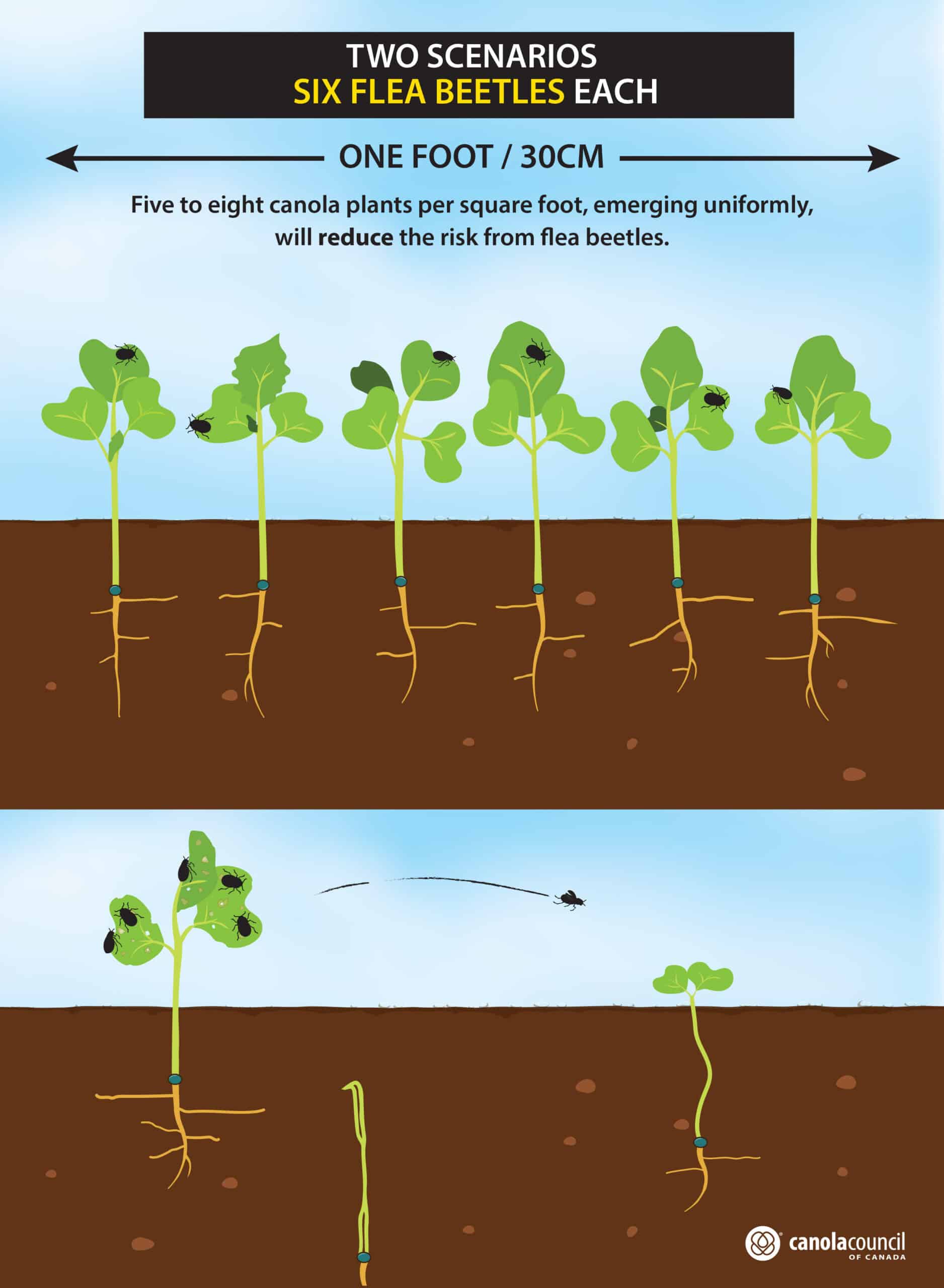Flea beetles remain the top ranked canola pest, according to the latest grower survey. The Canola Council of Canada 2024 grower survey asked respondents to name the diseases, weeds and insects of greatest economic risk to canola. Flea beetles were the most common answer in 2024, as they were in the 2022 and 2020 surveys.
While flea beetles seem to be unavoidable, growers can reduce the risk. John Gavloski, entomologist with Manitoba Agriculture, says canola crops that reach the four-leaf stage within three to four weeks of seeding are less likely to need protection from a foliar pesticide spray. Canola crops that require in-season foliar sprays are often slow-establishing and non-competitive.
Weather can be a major factor in rapid stand establishment. Canola sown in warm, moist soil will emerge quickly and uniformly. Warm conditions without moisture will often favour flea beetles over the crop. Whatever the weather, the following agronomy steps put the crop in the best possible scenario against flea beetles.
Target 5-8 plants per square foot
Canola crops that establish quickly and have five to eight plants per square foot usually face minimal risk from flea beetle feeding. More plants mean fewer beetles per plant – a situation more likely to keep leaf area loss below the threshold of 25 per cent. The graphic shown here is a visual representation of this point.
Seed shallow into warm, moist soil
A later seeding date may reduce the flea beetle risk if it means warmer soils and faster growth. Note that later-established canola crops could be flowering on hotter days and may have increased fall frost risk.
Consider advanced seed treatment
Advanced seed treatments will improve flea beetle protection in high-risk areas. However, seed treatments don’t work as well or are not actively taken up when the plant is not growing or when moisture is inadequate for the transfer of active ingredient from seed coat to seedling. Flea beetles need to take a bite of the canola seedling to take in the seed treatment insecticide.
Use safe rates of seed-placed fertilizer
The recommendation is to use only phosphorus in the seed row and no more than 20 lb./ac. of actual phosphate. Higher rates of seed-placed fertilizer add more stress, slow the pace of growth and reduce the stand.
Till versus no-till
While canola planted into warmer blackened soil may emerge faster, that same warm ground cleared of obstacles also tends to attract more flea beetles. Also consider that crop residue retains soil moisture, which can contribute to more rapid emergence when moisture is limited.
For more on flea beetle management tips, how to make the spray decision and how to improve foliar spray results, check out these Canola Watch fundamentals articles: Flea beetles: Management tips and The flea beetle spray decision: 8 steps. While there, sign up to receive the weekly Canola Watch agronomy email.
